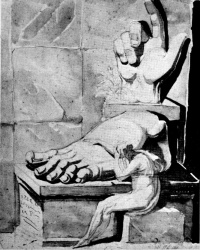Imitation (art)
From The Art and Popular Culture Encyclopedia
|
"Choose a day on which to represent the most sublime and affecting tragedy we have; appoint the most favorite actors; spare no cost upon the scenes and decorations; unite the greatest efforts of poetry, painting, and music; and when you have collected your audience, just at the moment when their minds are erect with expectation, let it be reported that a state criminal of high rank is on the point of being executed in the adjoining square; in a moment the emptiness of the theatre would demonstrate the comparative weakness of the imitative arts."--A Philosophical Enquiry into the Origin of Our Ideas of the Sublime and Beautiful (1757) by Edmund Burke |

|
Related e |
|
Featured: |
Imitation is the fundamental doctrine of artistic creativity according to which the creative process should be based on the close imitation of the masterpieces of the preceding authors. This concept was first forumated by Dionysius of Halicarnassus in the first century BCE as imitatio, and has since dominated for almost two thousand years the Western history of the arts and classicism; in the 18th century, Romanticism reversed it with the creation of the intitution of romantic originality. In the 20th century, the modernist and postmodern movements in turn discarded the romantic idea of creativity, and heightened the practice of imitation, copying, plagiarism, rewriting, appropriation and so on as the central artistic device.

